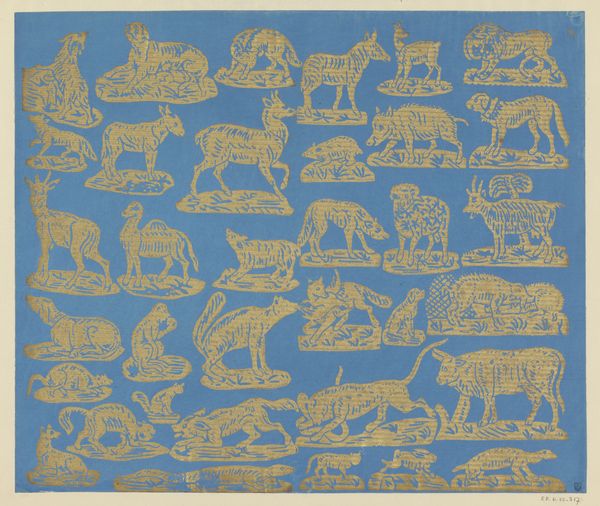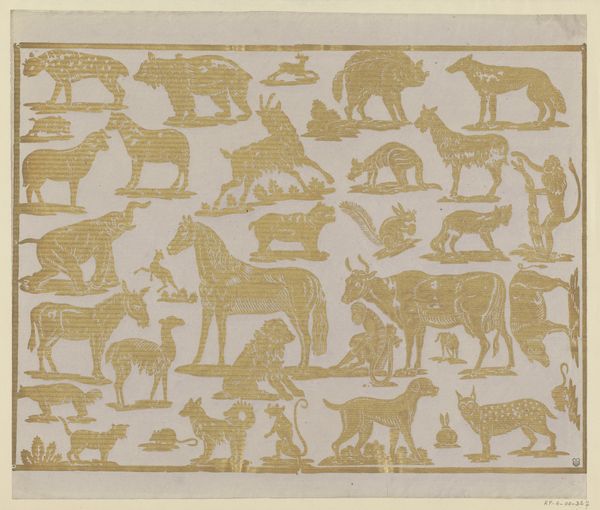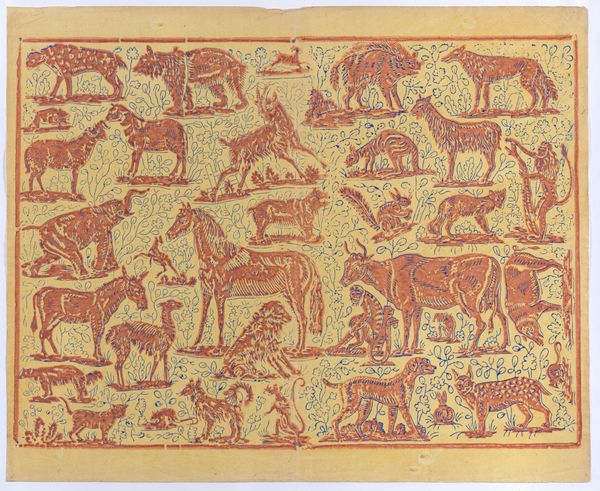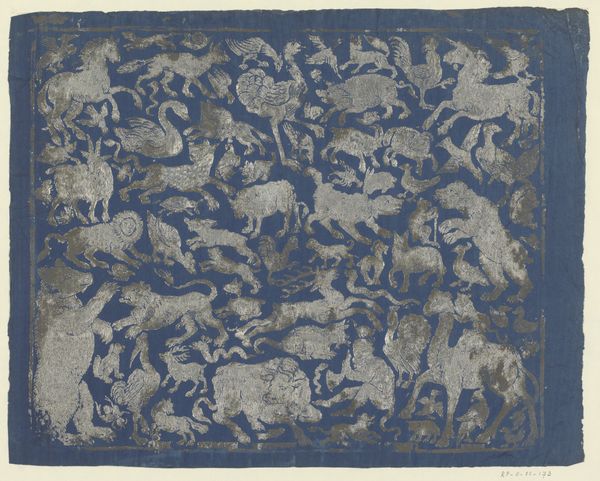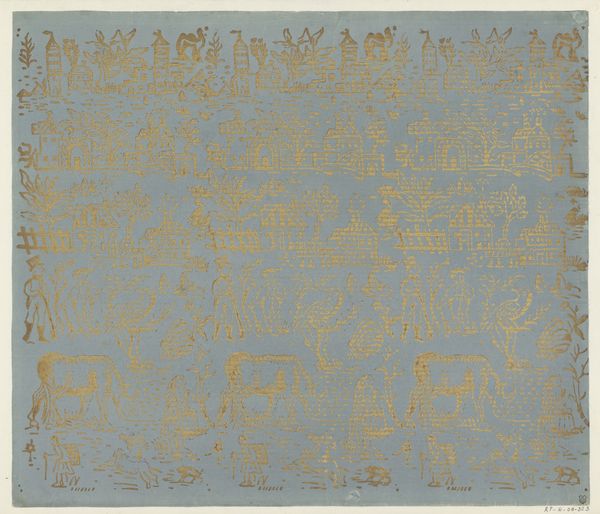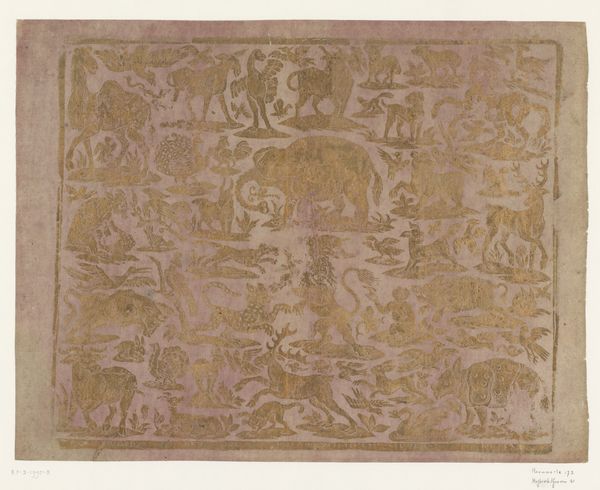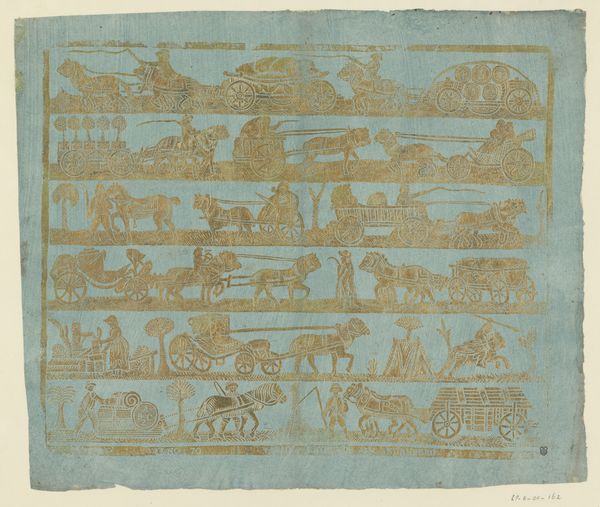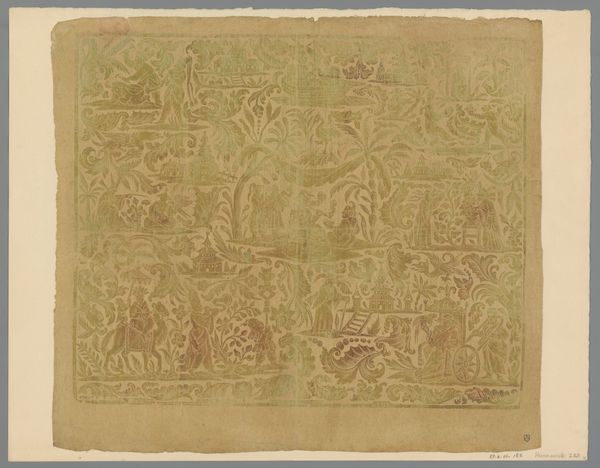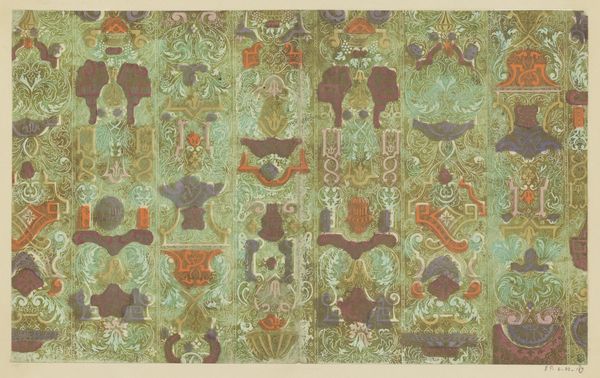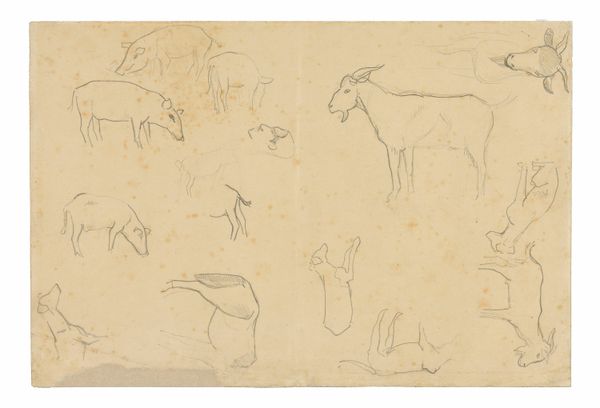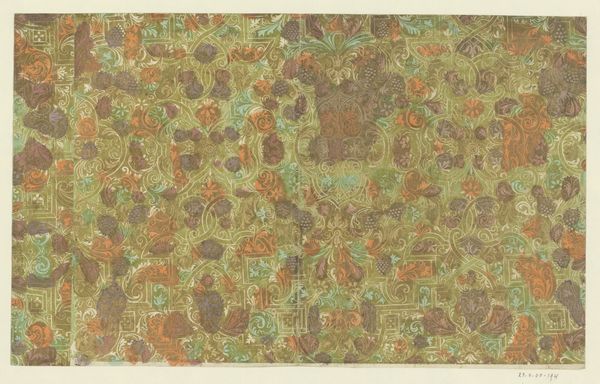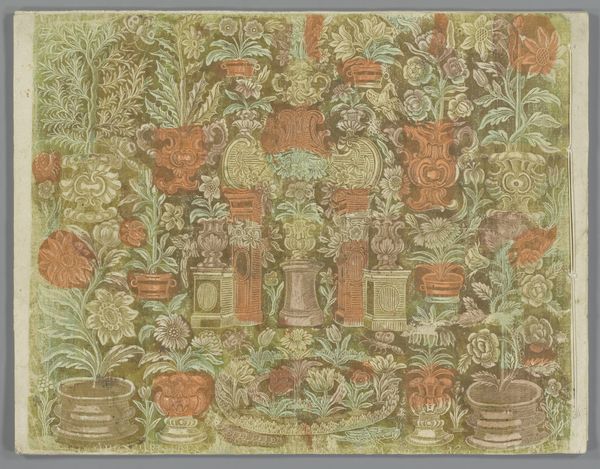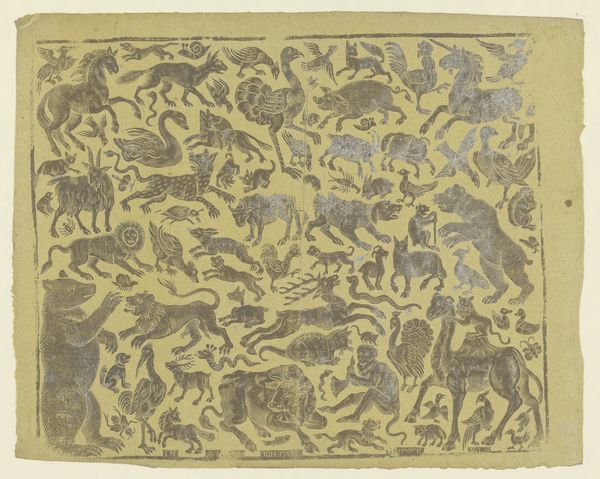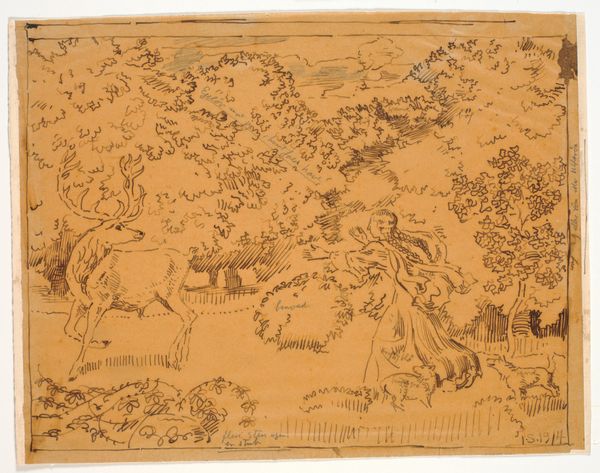
print, linocut
# print
#
linocut
#
linocut print
Dimensions: height 368 mm, width 437 mm
Copyright: Rijks Museum: Open Domain
Curator: This linocut print, titled "Blad met dieren," meaning "Sheet with Animals," was created sometime between 1850 and 1920 by the Dessauerschen Buntpapierfabrik. The image presents a gridded array of animals. Editor: There’s a quaint charm to this work. The olive-gold figures against the pale green ground give it a wonderfully old-fashioned feel. The repetition creates an almost wallpaper-like effect. Curator: Indeed. Consider the printing process itself. Linocut involves carving into a linoleum block, inking the raised surface, and then pressing it onto paper. The horizontal striations throughout the animals, this is indicative of the artist's deliberate mark-making, of manual labor imbedded into mechanical reproduction, and the industrial techniques this firm developed in manufacturing wallpaper. Editor: Each animal functions almost like a hieroglyph. The lion, the deer, the camel—they’re not just animals; they are potent symbols loaded with cultural weight. The grid arrangement lends it a taxonomic feel. Were these animals intended for children's education perhaps? Or something more decorative? Curator: Given the output of the Dessauerschen Buntpapierfabrik—who specialized in colorful patterned papers and book-binding material—it seems this was likely produced to appeal to emerging industrialized society's taste for playful mass-produced material goods. Editor: Looking closely, even in this mass-produced sheet, each animal manages to retain a degree of individuality and evokes stories. The wolf howling at the moon; the bear lumbering through a forest. These images are ingrained deep in our collective memory. It's like glimpsing a lost bestiary. Curator: I agree. The work occupies an intriguing space, bridging the gap between functional design and symbolic representation, commercial intent and handmade process. Editor: A sheet full of cultural memory ready to be used. It certainly makes one ponder the ongoing relationship between ourselves and the animal kingdom. Curator: Precisely, highlighting the often blurred distinction between art, industry, and nature itself.
Comments
No comments
Be the first to comment and join the conversation on the ultimate creative platform.
